Ledum and features of its cultivation
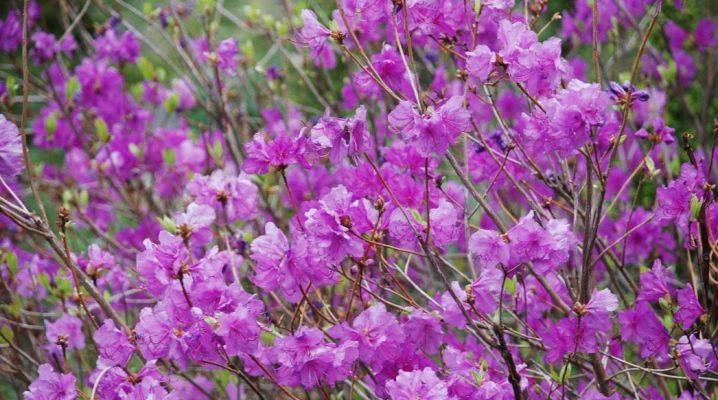
The topic of the peculiarities of wild rosemary, the peculiarities of its cultivation and where it grows in Russia may interest many gardeners. It is very useful to find out how the plant blooms, and what the shrub itself looks like, how it differs from the maral. It is also necessary to pay attention to the wild rosemary and the pharmacy, to the white rosemary and to the description of other species.

Description
In everyday life, wild rosemary is also called bug, bagun or forest rosemary. It belongs to the heather family of the order of heathers, forming a special genus in them. Its botanical relatives are cranberries, rhododendron, actinidia, camellia. And also among them are:
- touchy;
- cage;
- 2 types of loosestrife;
- black or ebony.
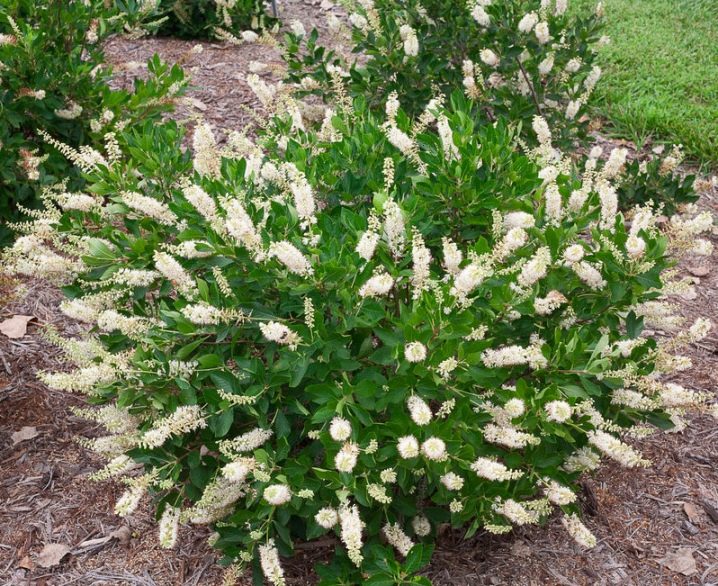
It should be borne in mind that in areas east of the Urals, under the name rosemary, they often mean a different plant - various representatives of the rhododendron group. True rosemary is shrubs and shrubs with evergreen foliage. These leaves are arranged according to the next scheme. The foliage is characterized by an all-edge structure. It is mostly leathery, often tucked at the edge.
Both the leaves and branches of wild rosemary, its flowers, seeds and pollen are the source of an extremely pungent odor. Such a pronounced aroma is associated with the presence of a complex essential oil. With the passage of time in the sun, especially closer to autumn, the rosemary leaf will have a brown-brown color.
The dark green color is typical only for bushes that have developed in a zone of stable shade, or after wintering under the snow. Ledum grows in both coniferous and mixed forests.
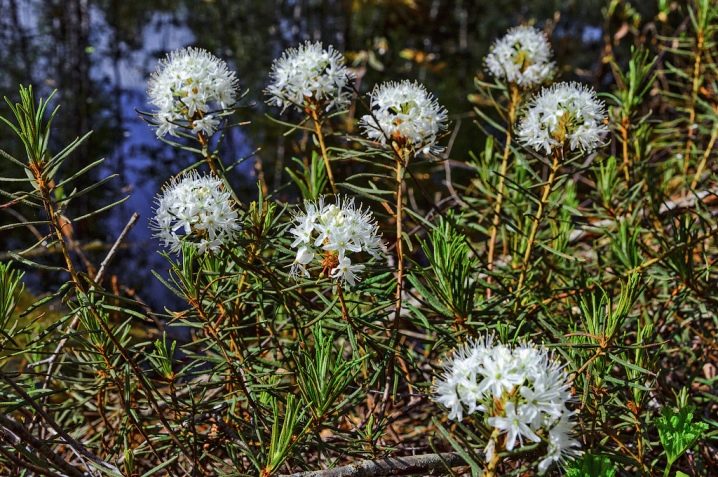
It can develop among larches in areas with high soil moisture. And also this plant is found near streams and on the mari (a highly humid landform that develops over permafrost). Sometimes wild rosemary thickets look like a monolithic carpet of undergrowth, which is extremely difficult to walk through. The plant blooms to form bisexual white flowers. They develop in inflorescences similar in shape to an umbrella or to a scutellum.
You can see such inflorescences on the edges of last year's shoots. The wild rosemary fruits are bolls with 5 nests. Inside they contain extremely small seeds with characteristic "wings". Flowering usually occurs in April, May and early summer.
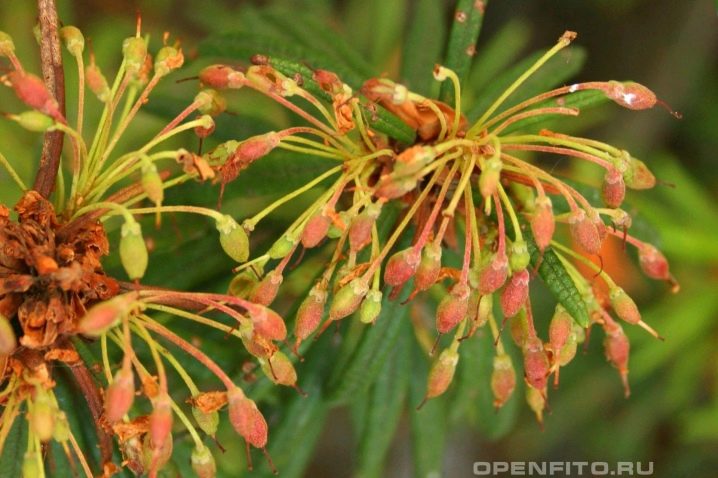
It is also important to characterize how wild rosemary differs from red rosemary. The only similarity between them is the formation of white flowers and the pronounced aroma of these flowers. The maralnik, found on Lake Baikal, as well as in Altai, is much higher and does not have any poisonous components at all. The rosemary root grows superficially. On marsh soil, it can penetrate about 40 cm into the ground. Ledum is not very picky about the quality of the soil, and that is why it is widespread in Russia.
It is often found in the Far East. The presence of this genus on Sakhalin was noted. In Yakutia, it can be seen even in the tundra. High cold resistance helps out such a plant in Buryatia. It settles willingly in river valleys and wetlands. This species is also found in other regions of Siberia.
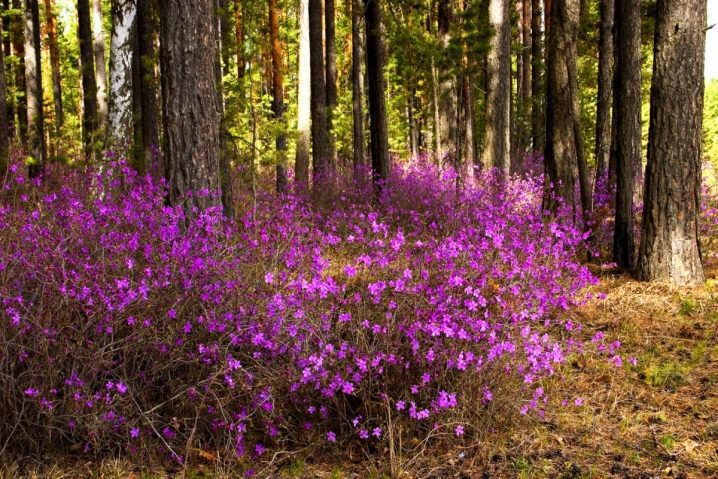
Views
Creeping, or prostrate, wild rosemary inhabited Siberia and the Far East region. You can see him both on Sakhalin and Chukotka. Such a plant was found in the northern regions of North America. It is found even in Greenland.Adaptation to harsh conditions forced the creeping rosemary to reduce its height to 20-30 cm.
He became a common inhabitant of shrub tundra, sandy hills and moss swamps. You can also see the shoots of this plant with their reddish-rusty hairs on stony placers. Flowering occurs in late spring and early summer. Although the individual flowers are large, the plant still looks sparse at this moment. The length of the leaf is from 1 to 2.5 cm.
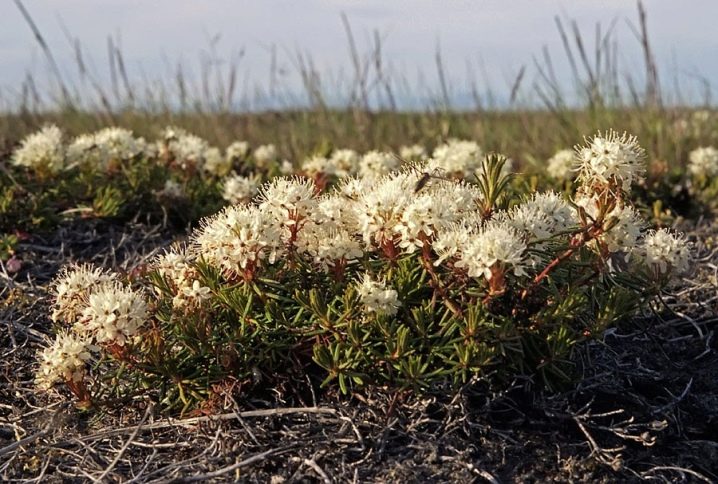
The Far Eastern wild rosemary is distinguished by its impressive height and significant leaf size. This wild plant is found in the undergrowth of the coniferous forest.
On Sakhalin, it is also found along the edges of stony placers. Flowering begins in May and lasts until mid-June.
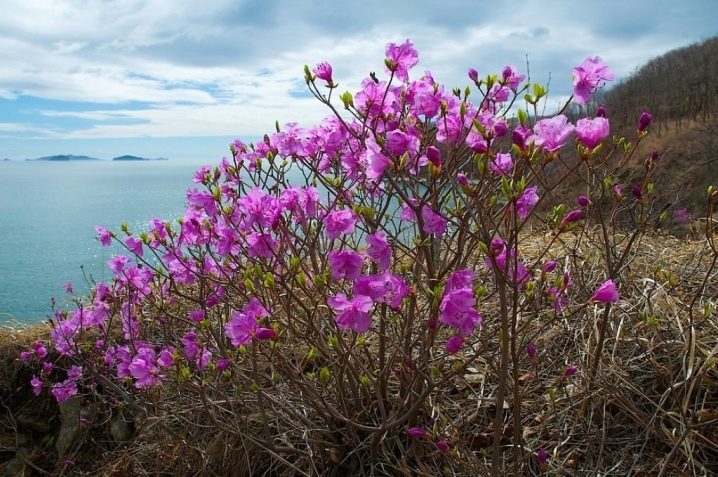
Marsh wild rosemary, it is also the wild rosemary, it is the fragrant bagun, it is the common wild rosemary, it can grow up to 2 m. It is an evergreen shrub with superficial root development. The shoots of such a plant are numerous. Young shoots are not lignified at first. The length of the leaves ranges from 1.5 to 4.5 cm. White flowers have a five-membered structure and reach 1 cm in diameter. This plant is often found in the Primorsky Territory.
The rhizome reaches 10 cm in length. This type of scent is associated with camphor scent. The leaf blades contain miniature yellow glands.
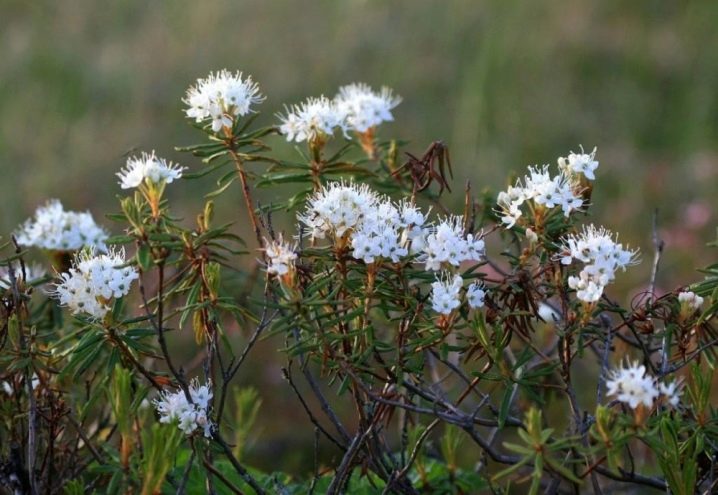
Ledum frosty is not mentioned anywhere, except for the song popular at one time. The Greenlandic type is able to demonstrate phenomenal resistance to winter cold. The height does not exceed 1 m. The bush has a rounded shape. The green leaves are shaped like an oblong oval. They are leathery and 2.5-3 cm long, flowering begins in the 3rd year after planting. Although winter hardiness is high, in severe winters, the tips of the shoots can freeze out.

Siberian wild rosemary has nothing to do with real wild rosemary. In fact, it is Ledebour's rhododendron. The main botanical form is a semi-shrub. Dahurian rhododendron and rosemary rosemary are one and the same plant. It is highly branched and has an average height of 2 to 4 m.
Important Features:
- upward direction of branches;
- short pubescence of young rusty-brown shoots;
- flowering up to the dissolution of the leaves;
- the likelihood of secondary autumn bloom;
- slow growth;
- occupation of vast territories.
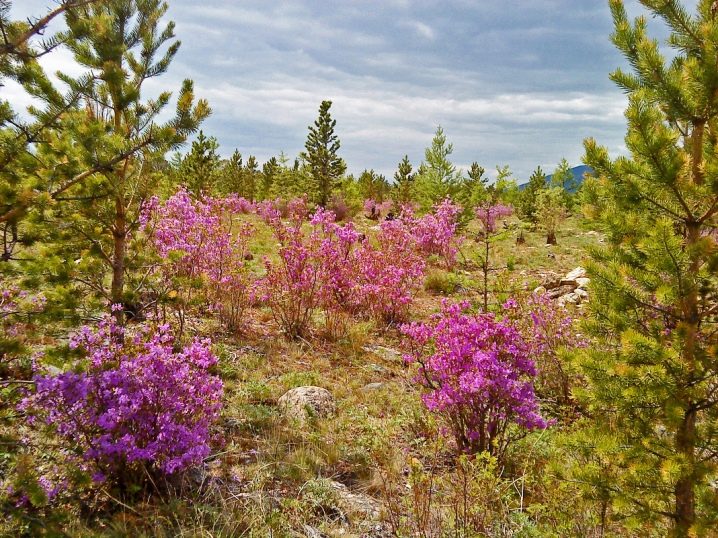
Landing
Ledum takes root well anywhere. However, it should not be planted in bright light, this culture is better adapted to the conditions of shade cultivation. Sour and loose soil, like in a swamp, would be ideal. In the planting holes, they put 3 shares of high-moor peat, 1 share of sand and 2 shares of coniferous land (sometimes replaced by tree bark). Some species of wild rosemary grow well even on poor sandy soil, in which case sand should dominate in the mixture.
It is usually recommended to plant wild rosemary in the spring. However, for seedlings with a closed root system, this is not critical. Taking into account the long development time in one place, they dig holes with a depth of 40 to 60 cm. In their lower part, 5-8 cm of a drainage mixture created from sand and river pebbles are poured.
A gap of 60-70 cm is left between the holes, and the plants themselves are thoroughly mulched.
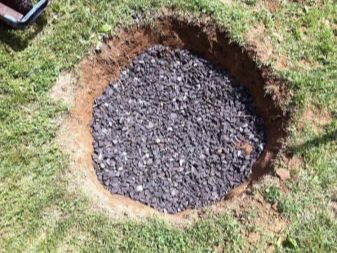
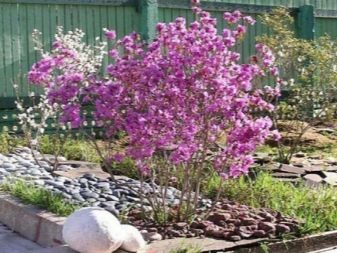
Care
Conditions
It is important to remember that any part of the rosemary contains toxic substances. After any work with him, you must not forget about thorough hand washing. Ideally, gloves should be worn. The soil for this plant must be constantly moist; it is also recommended to add needles into it. The newly planted crop should be mulched with peat.

Watering
Like other marsh plants, wild rosemary needs a significant amount of water. The choice of sites near the reservoir is recommended. Systematic irrigation is very important. A break is made only when long heavy rains fall.
Usually watering is carried out every 7 days, using up to 8 liters of water. It is necessary to speed up the procedure in hot weather.

Weeding and loosening
Wet ground is prized by many weeds.Therefore, they will inevitably clog the soil if not dealt with. Weed removal should be carried out systematically.
Its combination with loosening is recommended. Due to the superficial placement of the roots, you will have to weed and loosen the soil very carefully.
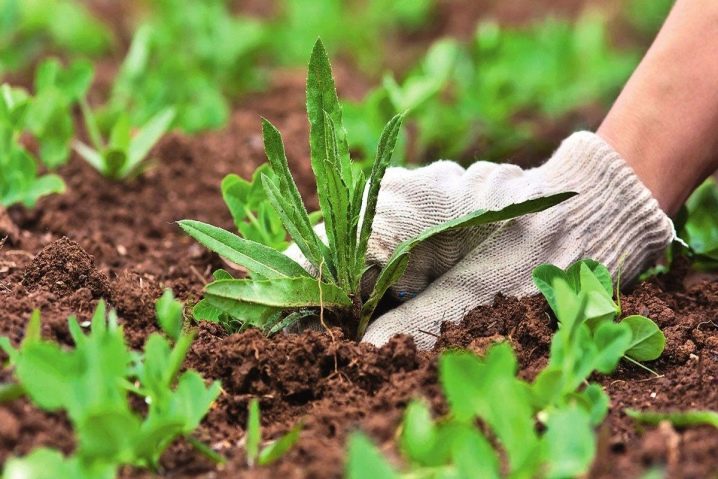
Top dressing
Fertilization is very important. Most often, this procedure is carried out every year 1 time during the spring months. Sometimes feeding is carried out twice during the growing season. It is allowed to use any mineral complexes, by default, intended for flower crops.
Usually fertilizers are used before the beginning of budding, if necessary, fertilizing is carried out a second time after the end of flowering.

Pruning
Only regularly pruned wild rosemary reveals all its possibilities. It is pruned for the first time during the season in early spring. Additional processing with pruning shears is necessary just before the onset of frost. It is worth emphasizing that these scraps are designed to significantly improve the health of the plant. In the autumn, they remove everything that has dried up or was damaged over the summer.
Formative pruning is far less practiced than sanitary clearance. It is carried out with excessive stretching of the branches. This technique will return the plant to its former decorative effect. Pruning of branches for aesthetic purposes also takes place immediately before the onset of cold weather. The shortening takes place by 1/3, while achieving an even appearance and a beautiful shape of the bushes.
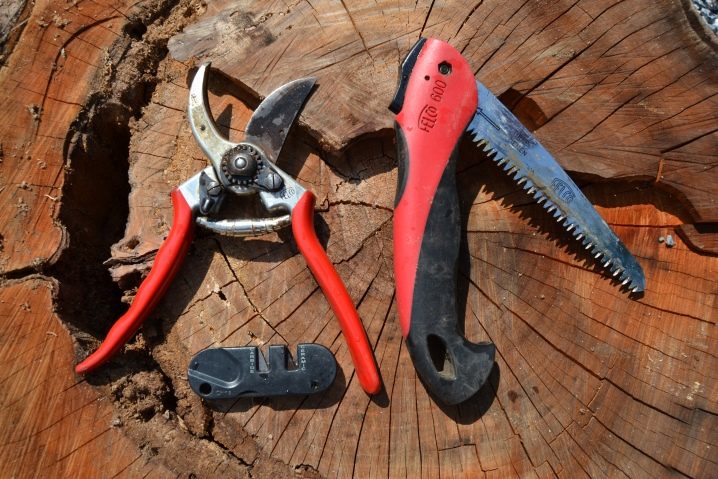
Wintering
By default, wild rosemary is able to survive rather harsh cold weather. Even in cold winters, this plant retains its qualities well. Problems can arise only in young growth, and especially in the tops of the bushes. Frozen parts of the plant will have to be removed. New botanical structures will appear instead.

Reproduction
The seed method of cultivating wild rosemary involves collecting seeds in the fall. The sowing of the seeds extracted from the capsules is carried out in the spring. The containers should be filled with loose earth mixed with sand. They put seeds on it. Then the tanks should be covered with plastic wrap and placed in cool places. Further care will be the same as for other seedlings.
Basically, wild rosemary is bred by cuttings. Cuttings should be harvested in the summer. It is useful to treat them with heteroauxin for more active root production. Before rooting, even small residual portions of the preparation must be thoroughly washed off.
Instead of greenhouses, boxes can be used, but in any case, you will have to wait for the harvest no earlier than next year.
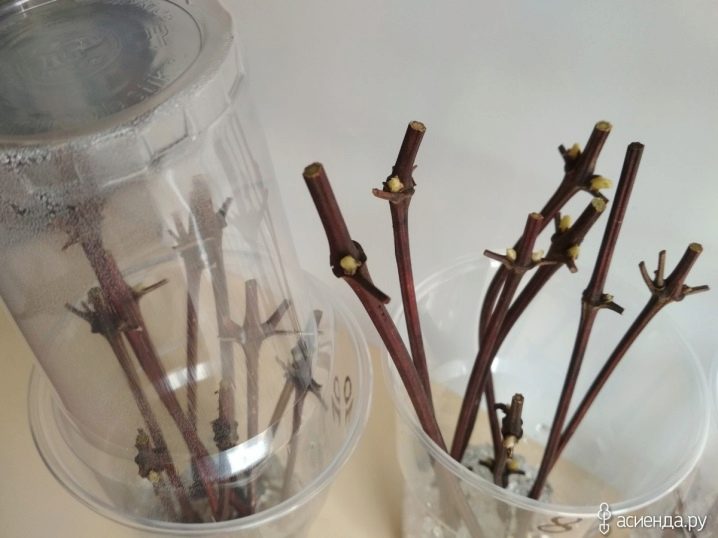
Diseases and pests
The resistance of wild rosemary to pathologies and dangerous insects is unprecedentedly high. Even the stagnation of water near the roots, which is destructive for many other plants, poses almost no danger to it. Under the condition of systematic loosening of the soil, the fungus cannot appear.
In rare cases, attacks by bedbugs and spider mites are likely. They are controlled with standard insecticides.
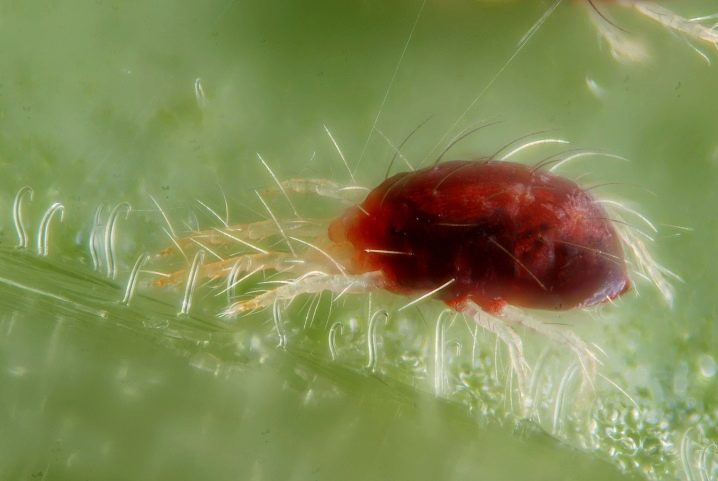













The comment was sent successfully.